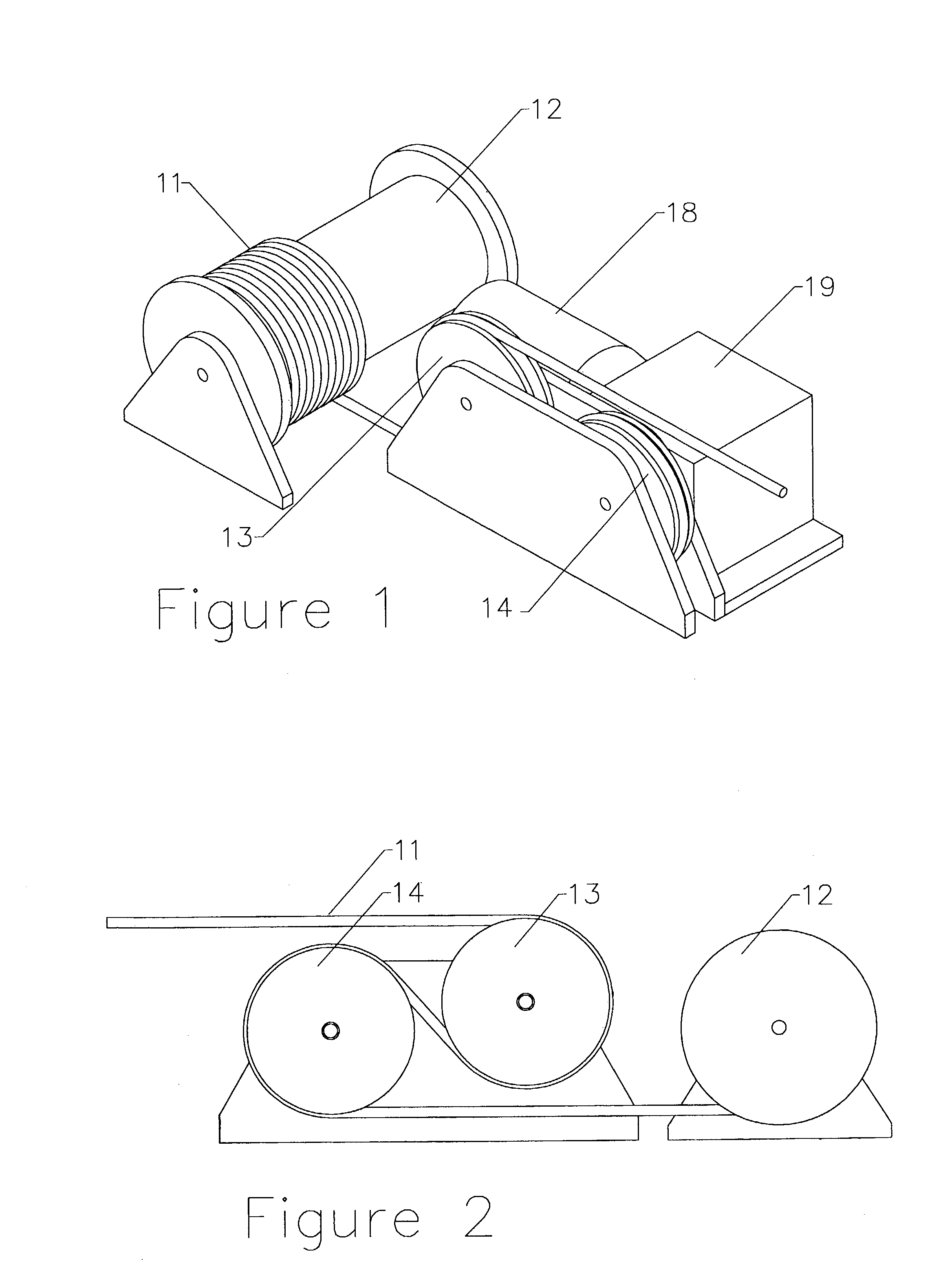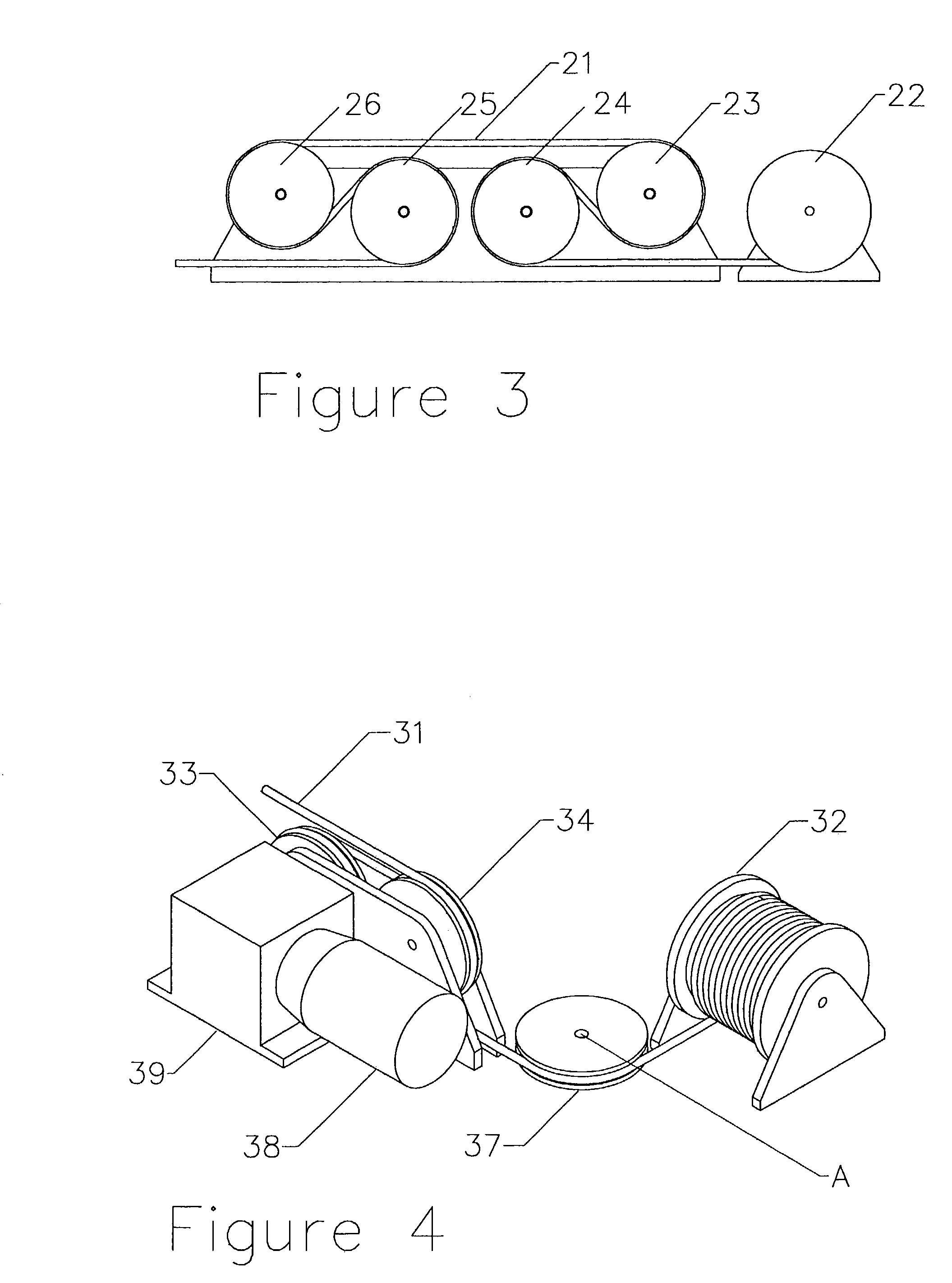Winch assembly for use with synthetic ropes
a technology of synthetic ropes and winch rods, which is applied in the direction of winding mechanisms, hoisting equipment, etc., can solve the problems of high anisotropy of synthetic ropes, high crushing resistance of synthetic ropes, and rapid wear and fibrilation of synthetic ropes, so as to reduce the crushing force of synthetic ropes
- Summary
- Abstract
- Description
- Claims
- Application Information
AI Technical Summary
Benefits of technology
Problems solved by technology
Method used
Image
Examples
first embodiment
[0028]FIG. 1 shows the winch system specifically designed for use with a flexible tensile member, and in particular with a synthetic, also termed organic, cable or rope. The rope 11 is spooled onto a reel or take-up drum 12 for storage. One end of rope 11 is fixed to the drum 12 in any of several manners that are well-known to those versed in the art. The rope 11 runs beneath a first sheave 13, without contacting it, to a second sheave 14 with which it is in contact. Rope 11 wraps around sheave 14 for close to 225° and then runs beneath sheave 13 with which it is also in contact. After passing around sheave 13 for approximately 225° rope 11 exits the winch system. Although it is advantageous to provide a large wrap angle the system can also function with much smaller wrap angles. The rope 11 typically passes over additional sheaves or pulleys (not shown) before being attached to an object to which a load is to be applied. The routing of rope 11 can be more easily seen in FIG. 2. Onl...
second embodiment
[0034]If both sheaves 13 and 14 are powered it is preferred that independent motors are used; although less preferable, it is possible to use one motor to drive both sheaves. This preference is described in relation to a second embodiment, which uses four sheaves, as shown in FIG. 3. Up to four of sheaves 23 to 26 can be powered either by a single motor operating through a gear train or, more preferably, by individual motors (motors not shown). Individual motors are preferred because sheaves 23 to 26 must rotate at slightly different rates, that depend upon the tension in rope 21, if slip is to be avoided. This difference in rotational speed is necessitated by the change in tension of rope 21 as it passes through the drive system. Tension increases as rope 21 passes in turn around sheaves 24, 23, 26 and 25 and with each increase in tension there is a corresponding elongation of the rope. Therefore, the velocity of a point on rope 21 must also change slightly as it passes through the...
PUM
 Login to View More
Login to View More Abstract
Description
Claims
Application Information
 Login to View More
Login to View More - R&D
- Intellectual Property
- Life Sciences
- Materials
- Tech Scout
- Unparalleled Data Quality
- Higher Quality Content
- 60% Fewer Hallucinations
Browse by: Latest US Patents, China's latest patents, Technical Efficacy Thesaurus, Application Domain, Technology Topic, Popular Technical Reports.
© 2025 PatSnap. All rights reserved.Legal|Privacy policy|Modern Slavery Act Transparency Statement|Sitemap|About US| Contact US: help@patsnap.com



